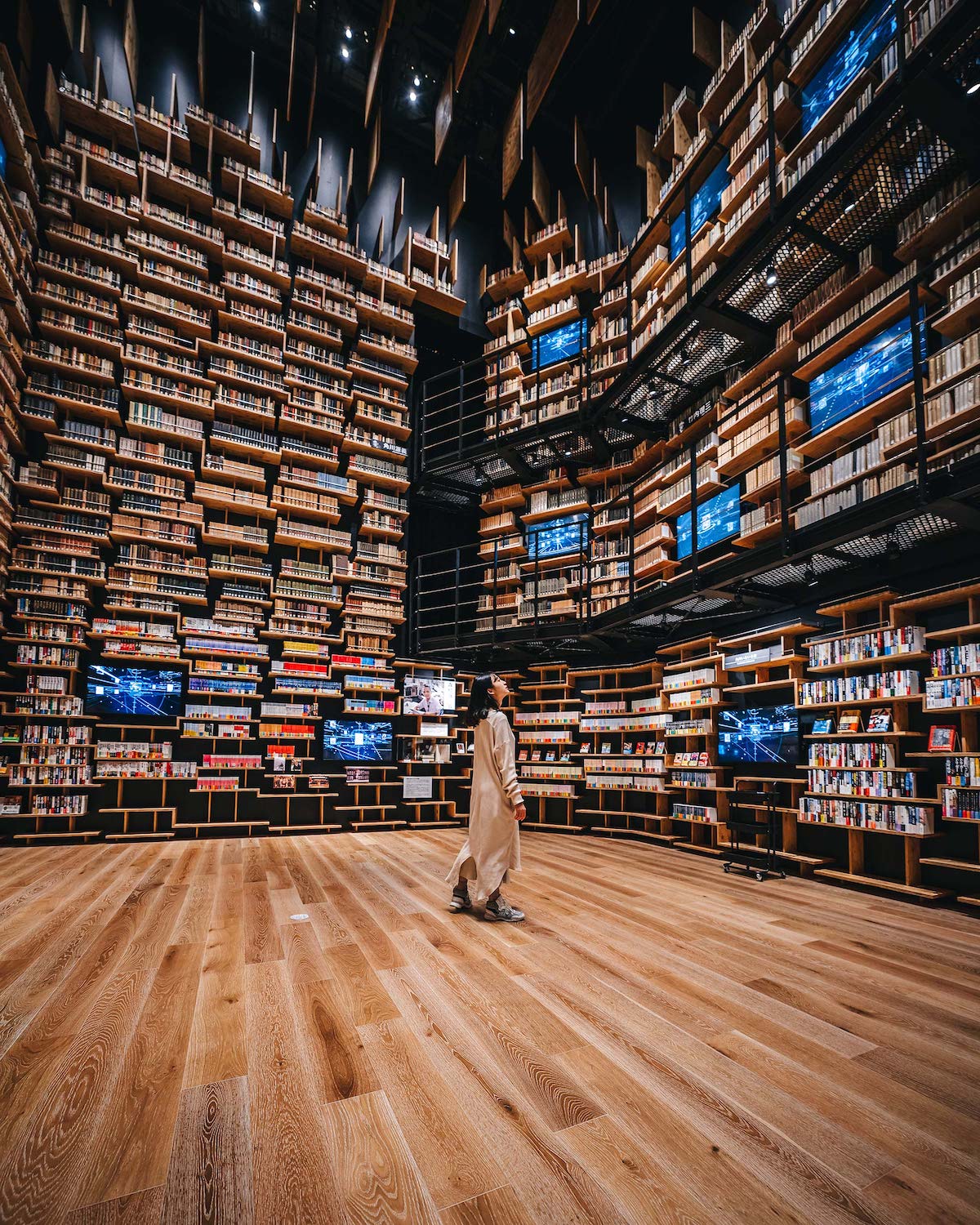
Photo: Ryosuke Kosuge
If you are a big reader or just love cozy interiors, there is almost nothing more exciting than a room lined wall to wall with books. The new Kadokawa Culture Museum, designed by renowned architect Kengo Kuma, includes an incredible interior filled with books. Kuma designed a unique wood shelving system that reaches floor to ceiling and continues across with floating wooden panels. Photographer Ryosuke Kosuge, or RK, has the opportunity to capture this space in a series of photographs that celebrate the impressive collection.
The Kadokawa Culture Museum is designed as one multifunctional building in the Tokorozawa Sakura Town development, located 19 miles from central Tokyo. This area includes new tourist destinations like an anime-inspired hotel and a shrine also designed by Kuma. The museum is wrapped with an interesting granite façade with dramatic angular lines and a grand entrance with monumental front steps.

Photo: Ryosuke Kosuge
The interior space that Kosuge captures is located on the fourth floor of a museum and acts as both a library and a theater space. Projection mapping uses the 500,000 books as part of varying exhibits that give the space its secondary function. Screens are also scattered across the shelving arrangement to support exhibitions. For those more interested in reading the books themselves, they can access some of the upper levels by following a series of metal walkways that ascend up the 26-foot-tall library.
While you could probably spend hours going through the titles included here, the museum has plenty more to offer on other floors. The first floor includes gallery spaces for temporary exhibitions and a small library. Higher up, you can find a café, shop, restaurant, and a whole floor dedicated to the art of anime. Seigow Matsuoka, director of the Kadokawa Culture Museum, believes that this building is an opportunity to incite imagination that can create positive and meaningful change.
“Although the world and Japan today are struggling with the effects of a permeating, invisible power, we are all trying to fight back and establish a new outlook on the future of humanity,” says Matsuoka. “Challenges are arising daily from a complex environment and networks, resulting in the mutation of genes and viruses. However, civilizations and cultures have a history of turning invisible power into visible forms. For both local residents and global citizens, Kadokawa Culture Museum, located in a small corner of Higashi-Tokorozawa, shall devote itself to turning the invisible into the visible to the best of its ability.”
The new Kadokawa Culture Museum, designed by Kengo Kuma, includes a library that doubles as an exhibition theater.

Photo: Ryosuke Kosuge
Photographer Ryosuke Kosuge, or RK, captures this library theater in a series of photographs that celebrate the 500,000-book collection.

Photo: Ryosuke Kosuge

Photo: Ryosuke Kosuge

Photo: Ryosuke Kosuge






















































































